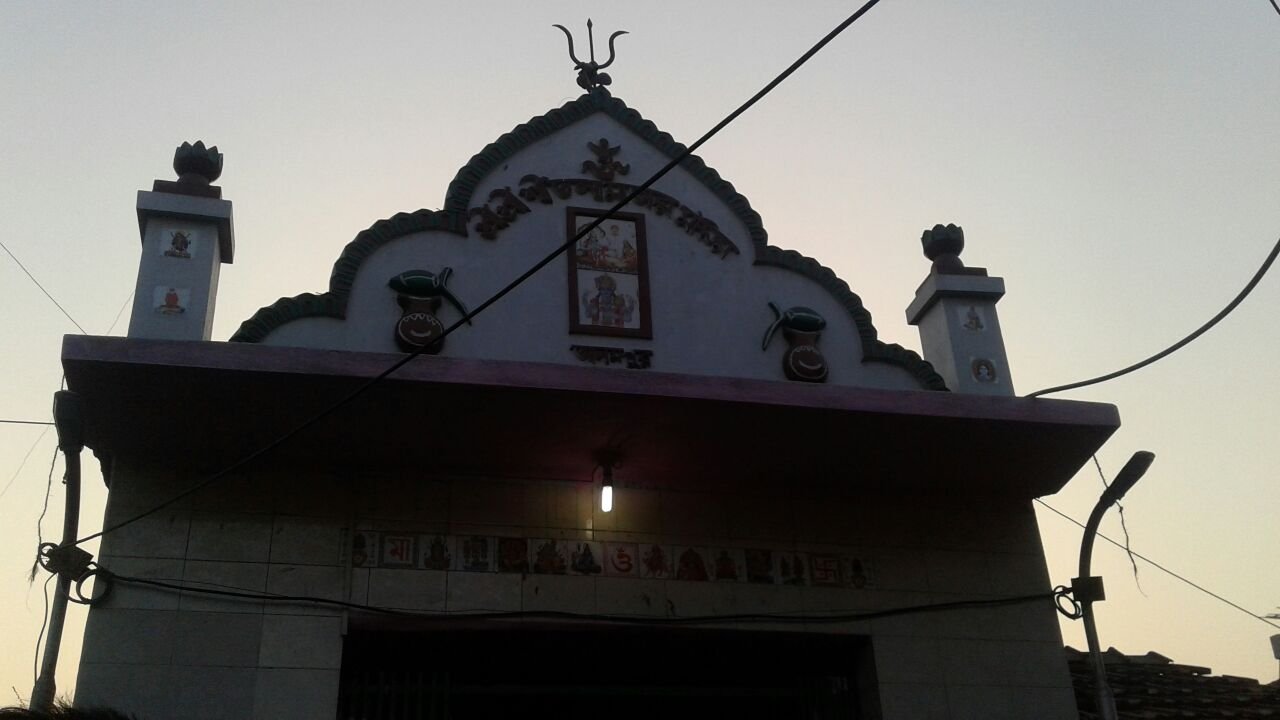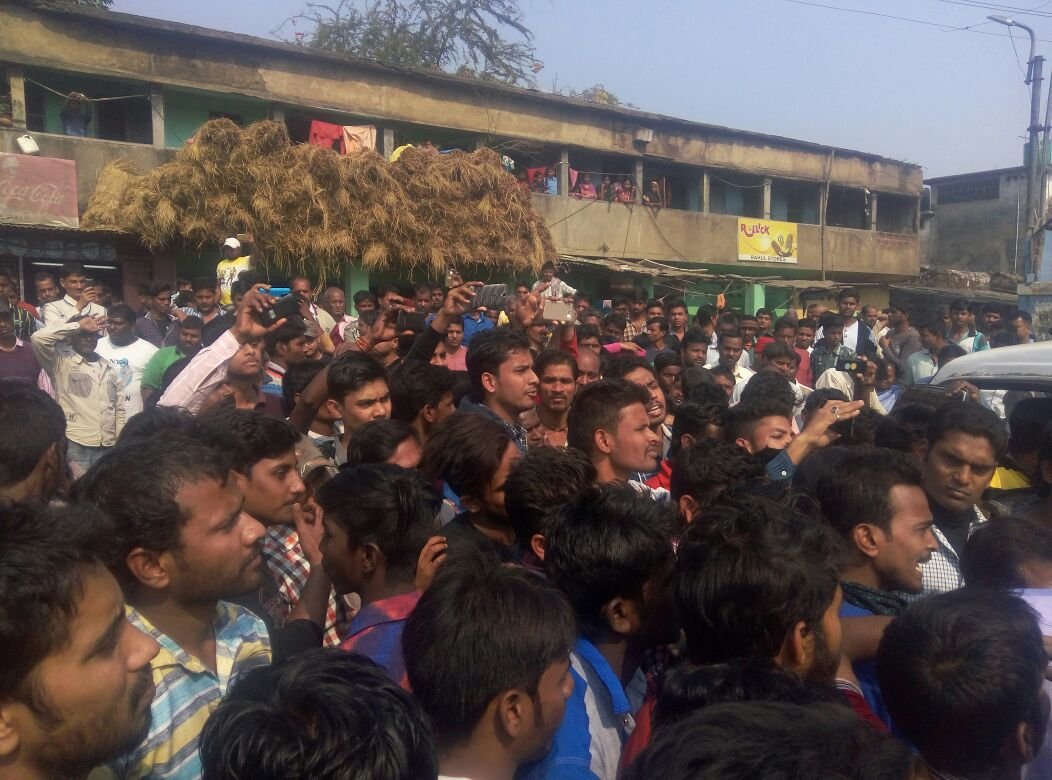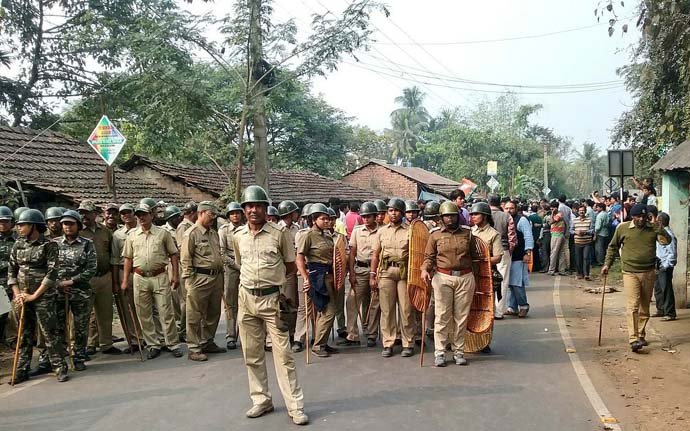The Shitala Mandir in Alampur, a locality on the western edge of Kolkata’s Metiabruz area, is generally abuzz in the early hours of the morning. People start offering their morning prayers here by 4:30 am, vendors assemble to sell their wares by 5 am . On the morning of January 23, however, there was a different kind of commotion outside the temple.

“The pujari opened the collapsible gate of the temple to find chunks of beef inside it. I rushed to the temple to find out a crowd of hundreds squeezed into the lane leading to the temple,” Ratan Singh, a businessman who lives less than 500 metres away from the temple, said.
Authorities, according to Ratan Singh, arrived at the spot only after the situation got out of hands. “It’s as if they didn’t care about us or how we feel about this,” says Singh.
The Shitala Mandir area of Alampur is a small Hindu settlement in a predominantly Muslim area of Metiabruz.
Soon, prohibitory orders were imposed in the area disallowing assembly of four or more people. The prohibitory orders also banned workshops after Hindus groups blocked traffic following the alleged desecration of the temples.

A week later, Alampur remains tense and no arrests have been made so far. But the story of Alampur is a prelude to a bigger narrative, that some say is being “imposed on Bengal”.
From Dhulagarh to Alampur, what do these clashes mean?
According to this report in Hindustan Times, ten districts of West Bengal have seen similar such communal incidents since October 2016 which is proving to be a major challenge for the state government.
On October 21, the BJP submitted a representation to West Bengal Governor Keshari Nath Tripathi demanding central intervention and that the government has failed to control law and order.
Sayantan Basu, the BJP secretary in Bengal, claimed that communal clashes are “the number one issue in Bengal”.
“The Trinamool government has failed miserably to keep this in check. People all over the state is suffering because of this,” Basu told ScoopWhoop News in a telephonic conversation from West Bengal.

On December 13, Dhulagarh in West Bengal’s Howrah district witnessed communal clashes where houses and shops were burnt and ransacked. A NDTV report said that violence peaked on December 14 and the police had to rush in to control bombing and arson, which was allegedly done by people brought in from other areas.
The state’s chief minister Mamata Banerjee, on her part, has stated that she will not tolerate anarchy in her state.
“Police is dealing with such things with a strong hand. We will soon bring a strong legislation against arson, where anyone setting fire to government or private party will be have to pay. One political party is trying to fan violence,” she said, without naming the BJP.
But is Bengal really burning ?
According to a 2016 Hindu report, in response to questions asked by two MPs in Parliament, Minister of State for Home Affairs, Kiren Rijiju, said that the number of communal incidents in Bengal had increased from 16 in 2014 to 24 between January-October 2015.
According to the same report, an analysis of data provided by the Home Ministry showed that the number of communal incidents in West Bengal has remained more or less the same over the past few years. While in 2012, 23 communal incidents occurred in West Bengal where nine persons lost their lives and 66 were injured, in 2013, 24 communal incidents were reported in which one person died and 80 were injured.
“Even during the previous Communist Party of India (Marxist)-led Left Front government, the number of communal incidents remained nearly the same. It’s just that these communal clashes get more media coverage now,” Biswanath Chakraborty, a prominent psephologist and political analyst, said.
Understanding the history of violence
According to the 2011 Census, Muslims make for 27 per cent of Bengal’s population.
“Whenever the minority community crosses the 20 per cent mark, the possibility of communal clashes increases. Which is why, there have been cases of stray communal violence in Bengal since the Independence,” Chakraborty said.
So then why are these ‘clashes’ making bigger headlines?
“BJP, which has very little presence in the state is making a conscious effort to highlight these cases to gain some mileage out of it. The fact that Trinamool’s politics is that of lumpenism, doesn’t help. They thrive on unrest,” says Chakraborty.
However, experts believe that these tactics will get BJP little headway in Bengal. “BJP will not be able to make a mark in Bengal simply because of the fact that even among the 60 per cent Hindu majority, 40 per cent have strong left-liberal leanings. They will never vote for BJP. These tactics might get them vote elsewhere. By highlighting rise of extremism in Bengal , they might make inroads somewhere else,” says Chakraborty.
Minority appeasement & governance
“Mamata Banerjee is caught in a bit of a spot because of her compulsive need to appease the minority community. It’s not a secret that the Trinamool government has identified Musilms as a vote bank. But what’s worrying is that she is letting that get in the way of good governance,” says Chakraborty.
Amal Kumar Mukhopadhyay, political analyst and former principal of Presidency college agrees. “Special monthly grants are given to Imams, while Hindu orgnisations are neglected. Recently, a seminar on Pakistan and Balochistan was barred from being organised in a city club because the Trinamool government felt that anything spoken against Pakistan government will be hurt sentiments of the minority community here,” says Mukhopadhyay.
After the Dhulagarh riots, the Mamata Banerjee government received widespread criticism because of the way the issue was handled. Banerjee ensured that there is a media blackout in the area for days.
“The Trinamool government needs to make tough decision now because it’s pretty clear that the BJP here has decided to target the government on this particular issue,” says Chakraborty.
The only solution, feels Mukhopadhyay, is to practice unbiased governance. “Everyone knows she is trying to keep the minority community to win their votes. She is losing respect because of that,” says Mukhopadhyay.

















